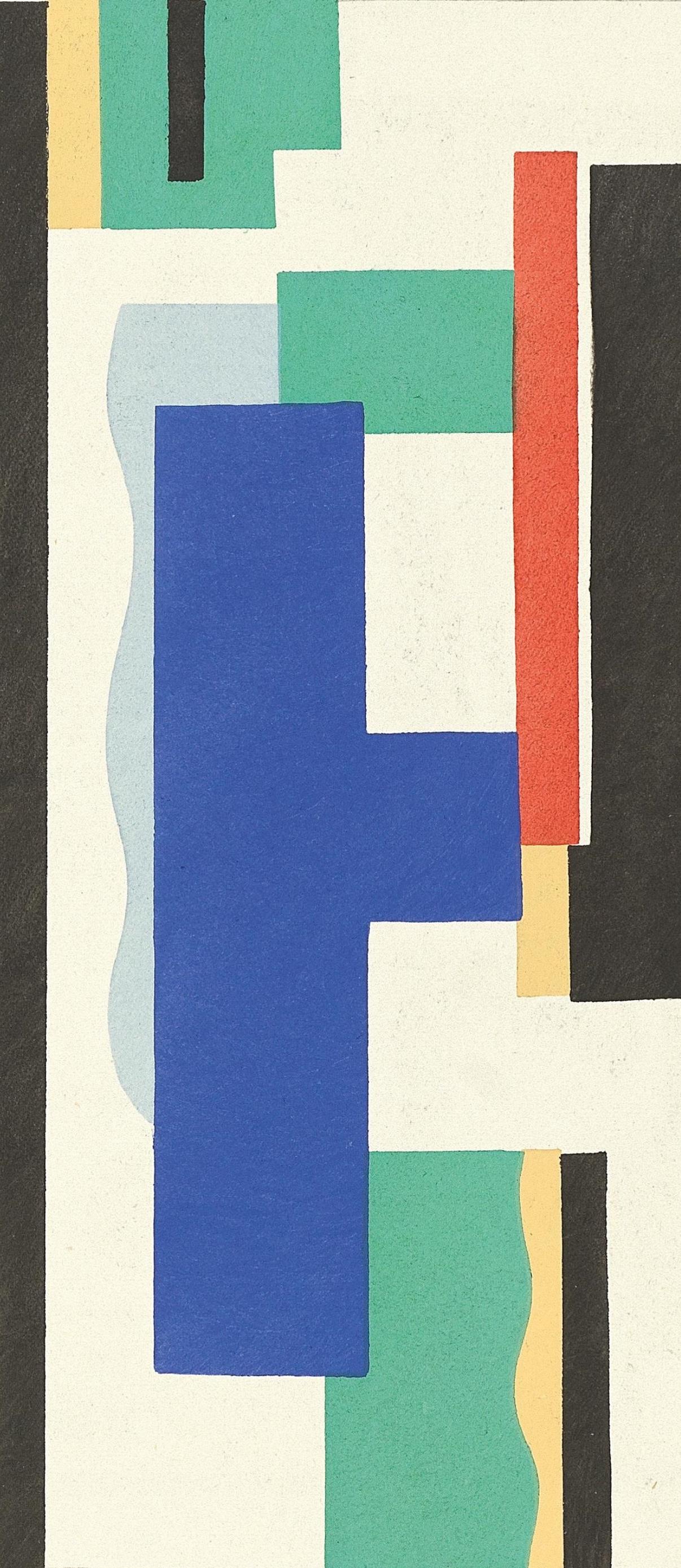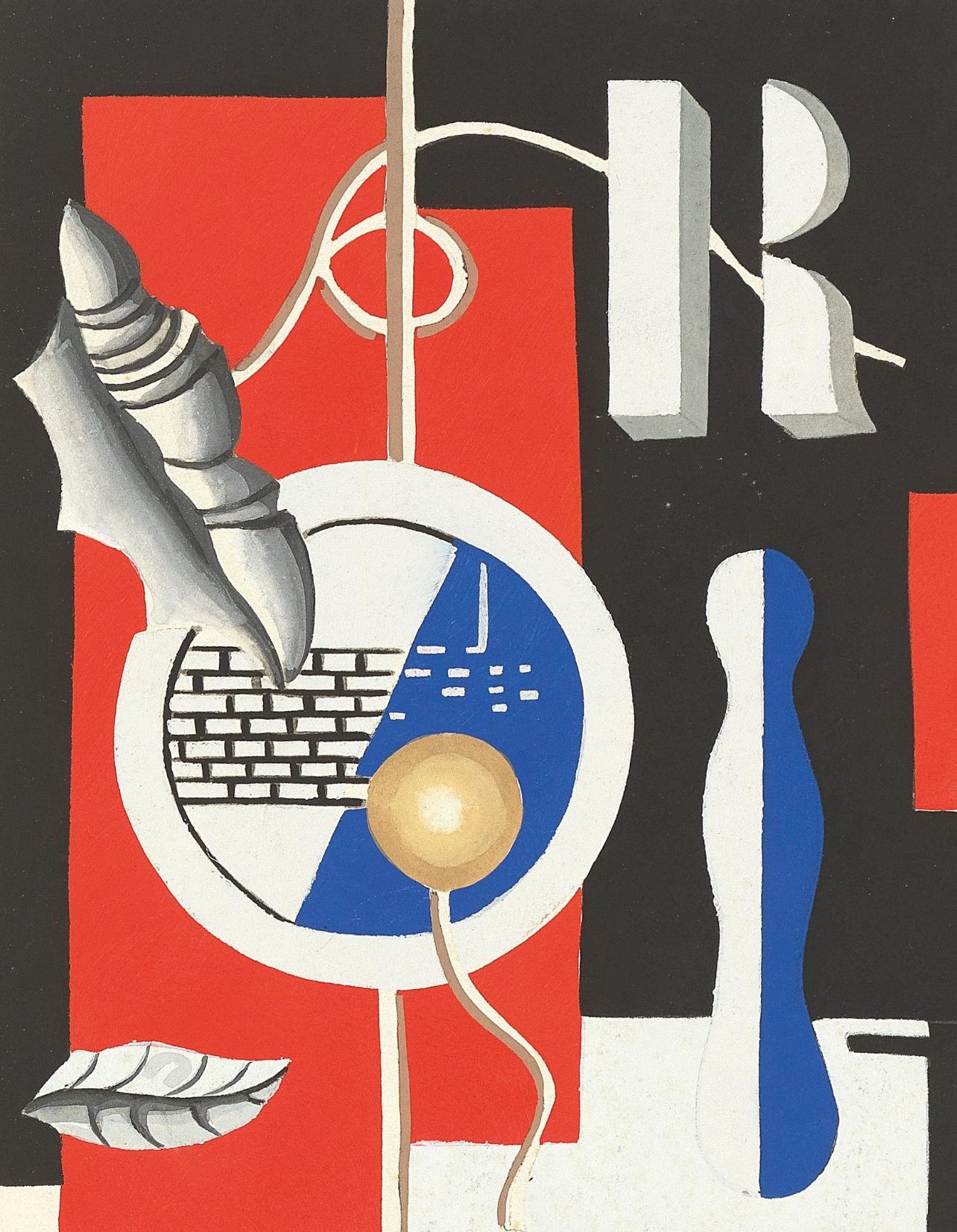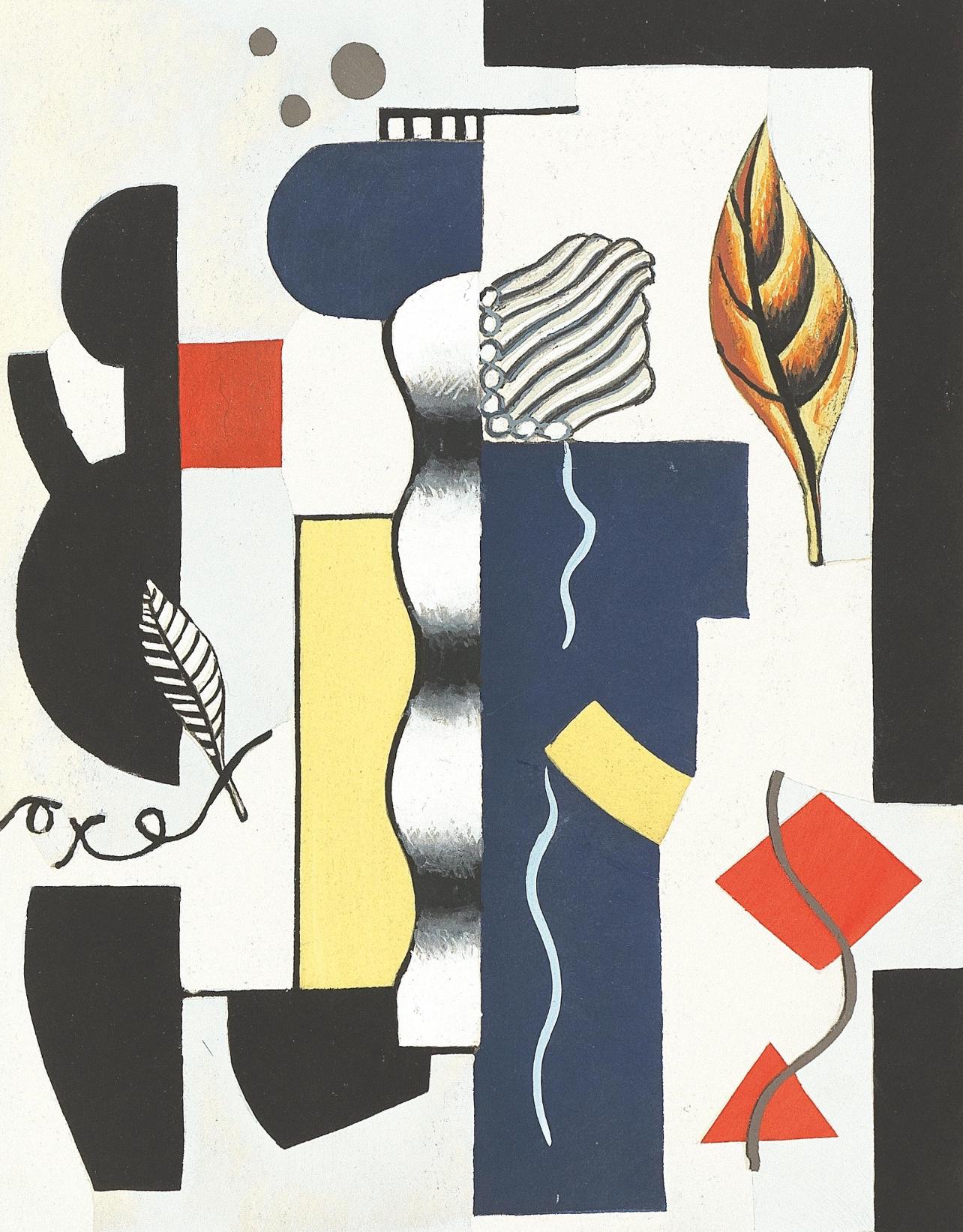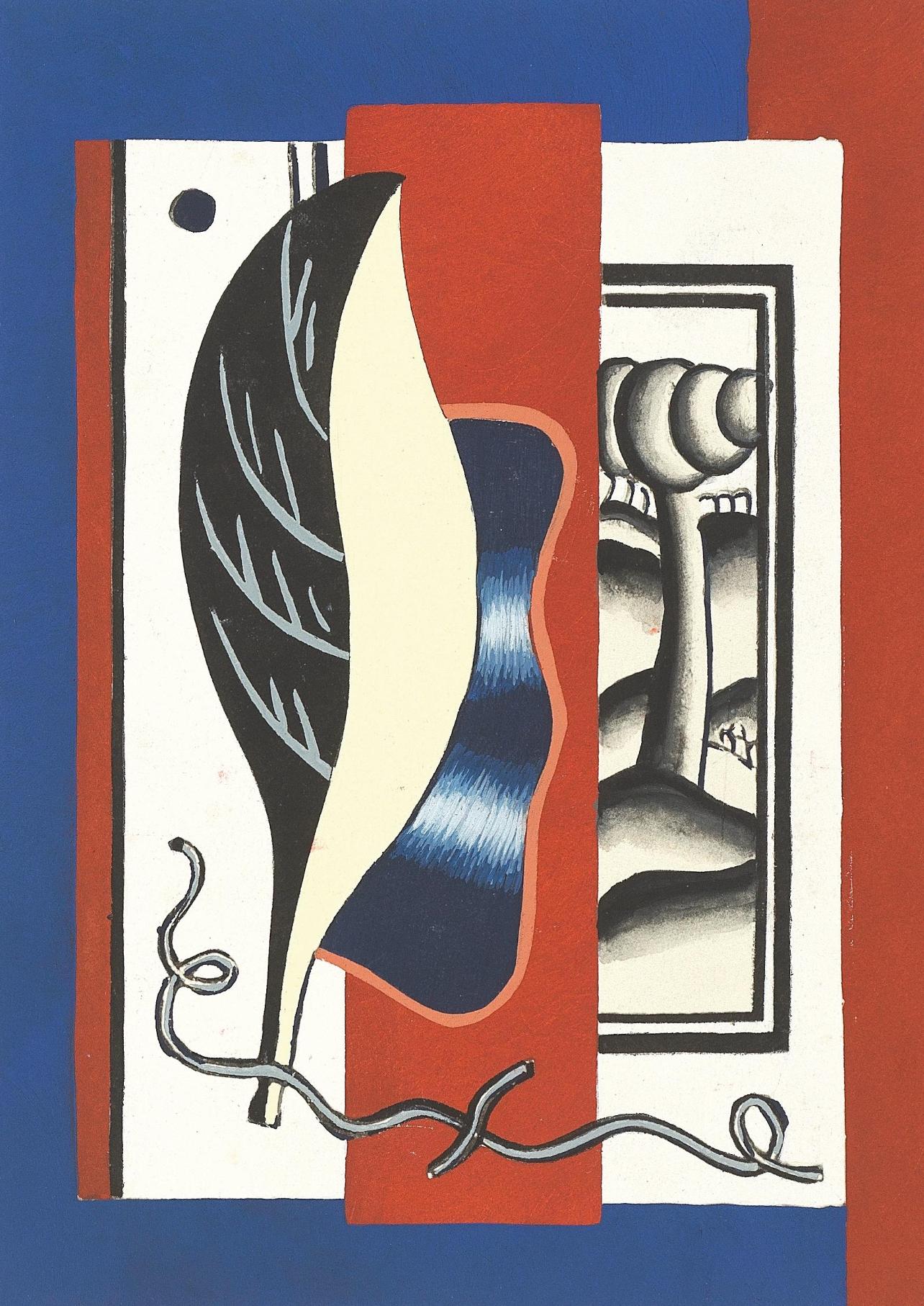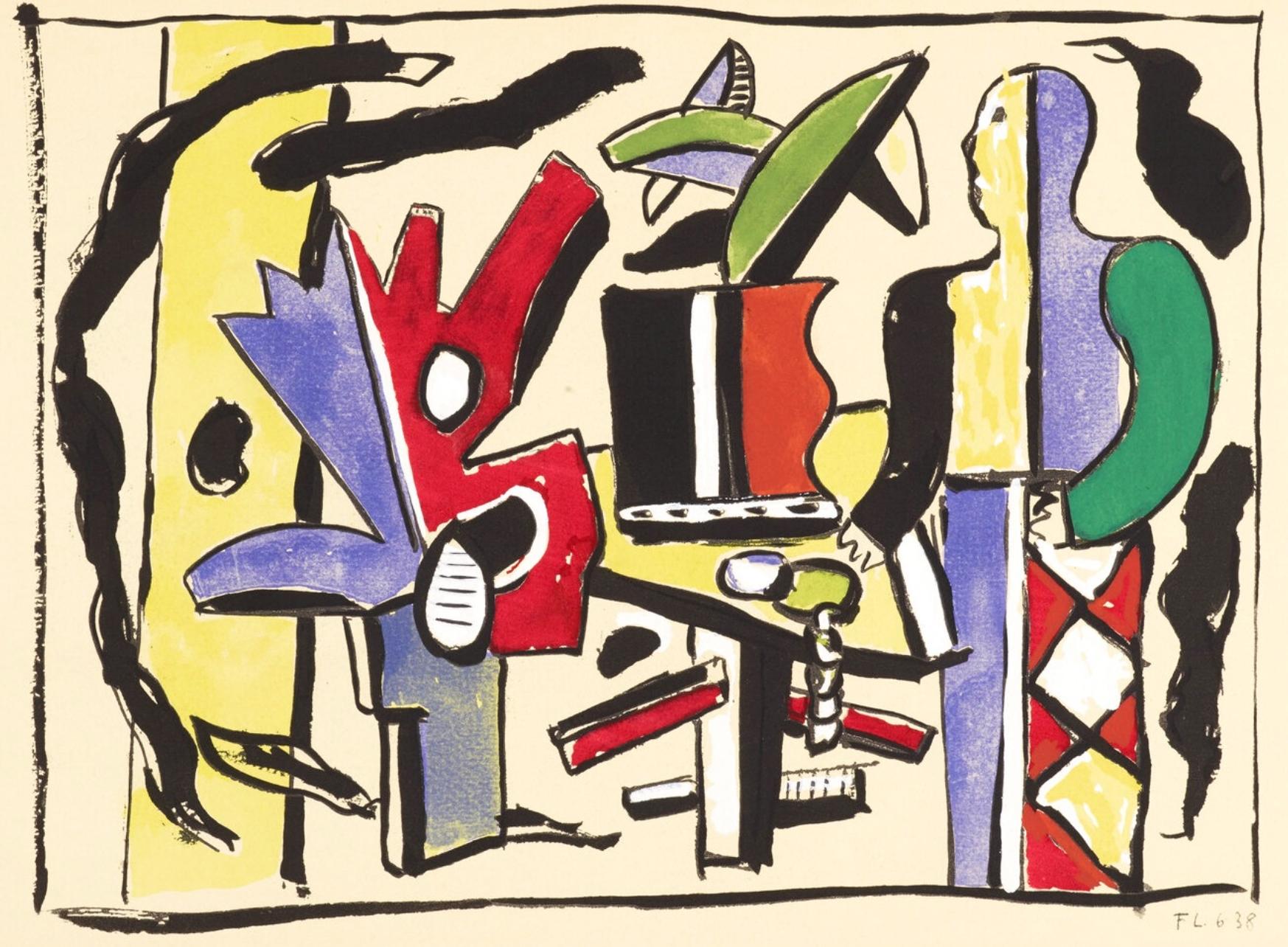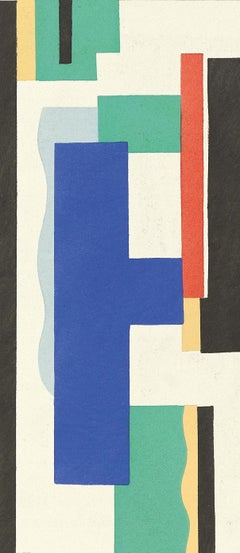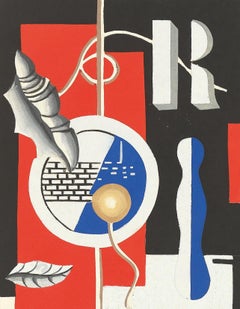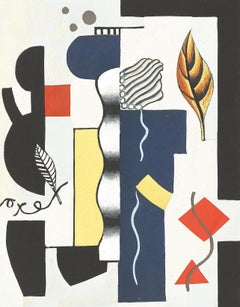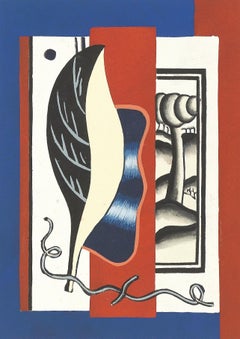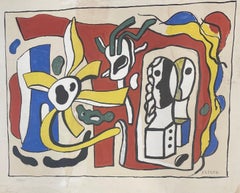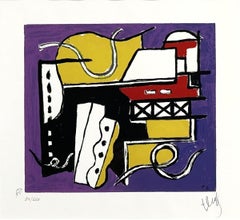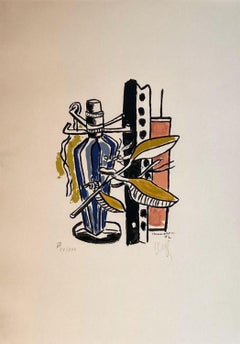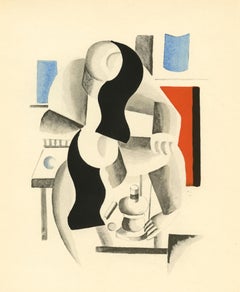Items Similar to Léger, Composition, Fernand Léger, Cahiers d'Art (after)
Want more images or videos?
Request additional images or videos from the seller
1 of 8
Léger, Composition, Fernand Léger, Cahiers d'Art (after)1928
1928
$2,396
$2,99520% Off
£1,870.97
£2,338.7120% Off
€2,123.85
€2,654.8120% Off
CA$3,446.69
CA$4,308.3620% Off
A$3,752.08
A$4,690.1120% Off
CHF 1,977.89
CHF 2,472.3620% Off
MX$45,432.86
MX$56,791.0720% Off
NOK 24,936.01
NOK 31,170.0220% Off
SEK 23,352.98
SEK 29,191.2320% Off
DKK 15,853.86
DKK 19,817.3220% Off
About the Item
Lithograph and stencil on vélin Hollande van Gelder paper. Unsigned and unnumbered, as issued. Good condition. Notes: From the album, Fernand Léger, 1928. Published and printed by Éditions des Cahiers d'Art, Paris, under the direction of Christian Zervos, Éditeur, Paris, December, 1928. Excerpted from the album (translated from French), This album, the fourth of the collection “les grands peintres d'aujound'hui", was drawn at DCCC examples, specifically: V examples on papier Japon Impérial with a gouache and an original engraving, numbered from I to V; VII examples on Japon Impérial with an original drawing and engraving, numbered from VI to XII; XL examples on Hollande van Gelder with an original engraving, numbered from XIII to LII; DCCXLVIII examples on vélin de Torpes, numbered from LIII to DCCC. In addition, some examples were drawn for the collaborators of "Cahiers d'Art". History of the publication: Cahiers d'Art is a French artistic and literary journal founded in 1926 by Christian Zervos. Cahiers d'Art is also an eponymous publishing house which has published many monographs on artists living in France in the first half of the twentieth century. Publications include the definitive catalogue of works by Pablo Picasso, Pablo Picasso par Christian Zervos, in 33 volumes, with over 16,000 images. The journal, founded by art critic Christian Zervos in Paris at 14, rue du Dragon in 1926, and was published until 1960. Though publication was interrupted from 1941 to 1943, the first post-war issue was dated 1940–1944 and focused on poets and writers from the Resistance, including Vercors. Cahiers d'Art also published selections from poet Paul Éluard's Open Book I (1940) and Open Book II (1942). After World War II, the psychoanalyst Jacques Lacan was invited by Zervos to publish two articles on logic: Logical Time and the Assertion of Anticipated Certainty (1945) and The Number Thirteen and the Logical Form of Suspicion (1946). Samuel Beckett also contributed one of his earliest texts in French, The Painting of Van de Velde or the World and the Pants. The journal has been noted for the quality of its articles and illustrations which promoted Modern Art in France for over thirty years. Artists represented include Picasso, Matisse, Fernand Léger, Max Ernst, Raoul Dufy, Marc Chagall, Brâncuși, Van Gogh, Paul Klee, Henri Laurens, Moholy-Nagy, Jean Lurçat, Joan Miró, Calder, Victor Brauner, De Chirico, Wolfgang Paalen, Marcel Duchamp, and Man Ray.
FERNAND LEGER (1881-1955) was a French painter, sculptor, and filmmaker. In his early works he created a personal form of cubism (known as "tubism") which he gradually modified into a more figurative, populist style. His boldly simplified treatment of modern subject matter has caused him to be regarded as a forerunner of pop art. Léger was born in Argentan, Orne, Lower Normandy, where his father raised cattle. Fernand Léger initially trained as an architect from 1897 to 1899, before moving in 1900 to Paris, where he supported himself as an architectural draftsman. After military service in Versailles, Yvelines, in 1902–1903, he enrolled at the School of Decorative Arts after his application to the École des Beaux-Arts was rejected. He nevertheless attended the Beaux-Arts as a non-enrolled student, spending what he described as "three empty and useless years" studying with Gérôme and others, while also studying at the Académie Julian. He began to work seriously as a painter only at the age of 25. At this point his work showed the influence of impressionism, as seen in Le Jardin de ma mère (My Mother's Garden) of 1905, one of the few paintings from this period that he did not later destroy. A new emphasis on drawing and geometry appeared in Léger's work after he saw the Cézanne retrospective at the Salon d'Automne in 1907. In 1909, he moved to Montparnasse and met Alexander Archipenko, Jacques Lipchitz, Marc Chagall, Joseph Csaky and Robert Delaunay. In 1910, he exhibited at the Salon d'Automne in the same room (salle VIII) as Jean Metzinger and Henri Le Fauconnier. In his major painting of this period, Nudes in the Forest, Léger displays a personal form of Cubism that his critics termed "Tubism" for its emphasis on cylindrical forms. In 1911, the hanging committee of the Salon des Indépendants placed together the painters identified as 'Cubists'. Metzinger, Albert Gleizes, Le Fauconnier, Delaunay and Léger were responsible for revealing Cubism to the general public for the first time as an organized group. The following year he again exhibited at the Salon d'Automne and Indépendants with the Cubists, and joined with several artists, including Le Fauconnier, Metzinger, Gleizes, Francis Picabia and the Duchamp brothers, Jacques Villon, Raymond Duchamp-Villon and Marcel Duchamp to form the Puteaux Group—also called the Section d'Or (The Golden Section) paintings, from then until 1914, became increasingly abstract. Their tubular, conical, and cubed forms are laconically rendered in rough patches of primary colors plus green, black and white, as seen in the series of paintings with the title Contrasting Forms. Léger made no use of the collage technique pioneered by Braque and Picasso.
- Creation Year:1928
- Dimensions:Height: 11.024 in (28.01 cm)Width: 8.94 in (22.71 cm)
- Medium:
- Movement & Style:
- After:Fernand Léger (1881-1955, French)
- Period:
- Condition:
- Gallery Location:Southampton, NY
- Reference Number:1stDibs: LU1465215478732
About the Seller
4.9
Platinum Seller
Premium sellers with a 4.7+ rating and 24-hour response times
Established in 1978
1stDibs seller since 2021
1,214 sales on 1stDibs
Typical response time: <1 hour
- ShippingRetrieving quote...Shipping from: Southampton, NY
- Return Policy
Authenticity Guarantee
In the unlikely event there’s an issue with an item’s authenticity, contact us within 1 year for a full refund. DetailsMoney-Back Guarantee
If your item is not as described, is damaged in transit, or does not arrive, contact us within 7 days for a full refund. Details24-Hour Cancellation
You have a 24-hour grace period in which to reconsider your purchase, with no questions asked.Vetted Professional Sellers
Our world-class sellers must adhere to strict standards for service and quality, maintaining the integrity of our listings.Price-Match Guarantee
If you find that a seller listed the same item for a lower price elsewhere, we’ll match it.Trusted Global Delivery
Our best-in-class carrier network provides specialized shipping options worldwide, including custom delivery.More From This Seller
View AllLéger, Composition, Fernand Léger, Cahiers d'Art (after)
By Fernand Léger
Located in Southampton, NY
Lithograph and stencil on vélin Hollande van Gelder paper. Unsigned and unnumbered, as issued. Good condition. Notes: From the album, Fernand Léger, 1928. Published and printed by Éd...
Category
1920s Modern Landscape Prints
Materials
Lithograph
Léger, Composition, Fernand Léger, Cahiers d'Art (after)
By Fernand Léger
Located in Southampton, NY
Lithograph and stencil on vélin Hollande van Gelder paper. Unsigned and unnumbered, as issued. Good condition. Notes: From the album, Fernand Léger, 1928. Published and printed by Éd...
Category
1920s Modern Landscape Prints
Materials
Lithograph
Léger, Composition, Fernand Léger, Cahiers d'Art (after)
By Fernand Léger
Located in Southampton, NY
Lithograph and stencil on vélin Hollande van Gelder paper. Unsigned and unnumbered, as issued. Good condition. Notes: From the album, Fernand Léger, 1928. Published and printed by Éd...
Category
1920s Modern Landscape Prints
Materials
Lithograph
Léger, Composition, Fernand Léger, Cahiers d'Art (after)
By Fernand Léger
Located in Southampton, NY
Lithograph and stencil on vélin Hollande van Gelder paper. Unsigned and unnumbered, as issued. Good condition. Notes: From the album, Fernand Léger, 1928. Published and printed by Éd...
Category
1920s Modern Landscape Prints
Materials
Lithograph
Léger, Composition, Contrastes (after)
By Fernand Léger
Located in Southampton, NY
Lithograph and stencil on papier a la cuve du moulin Richard de Bas spécialement filigrané pour cette édition paper. Inscription: signed in the plate and unnumbered, as issued. Good ...
Category
1950s Modern Figurative Prints
Materials
Lithograph, Stencil
Léger, Composition, Douze Contemporains (after)
By Fernand Léger
Located in Southampton, NY
Lithograph, stencil on wove paper. Inscription: Unsigned and unnumbered. Good condition. Notes: From the folio, Douze Contemporains, 1959; published by Éditions d'Art du Lion, Paris;...
Category
1950s Modern Abstract Prints
Materials
Lithograph, Stencil
You May Also Like
French Modern Art by Fernand Léger - Untitled
By Fernand Léger
Located in Paris, IDF
Lithography on paper printed in 40's, numbered 42/300, 54,5 x 75,5 x 0,1 cm - 21,4 x 29,7 x 0,04 in, printed by Moulot Editions Editions with the stamp Fernand Léger on Musee Biot pa...
Category
1940s Cubist Abstract Prints
Materials
Paper, Lithograph
Fernand Léger, Composition géométrique (Geometric composition)
By (after) Fernand Léger
Located in Palo Alto, CA
Utilizing a bold color palette of purple, yellow, red, and black, Léger creates an abstract work in which shapes and forms create a constructive unit. We detect hints of a road, a la...
Category
1950s Modern Abstract Prints
Materials
Screen
$7,000 Sale Price
22% Off
Album de 10 sérigraphies
By Fernand Léger
Located in Paris, FR
Lithograph, 1951
Edition : 57/200
Publisher : Guilde internationale de la Gravure (Genève)
Printer : Jean Bruller (Paris)
Catalog : Sapphire E7
56.00 cm. x 38.00 cm. 22.05 in. x 14....
Category
1950s Abstract Abstract Prints
Materials
Lithograph
pochoir
By (after) Fernand Léger
Located in Henderson, NV
Medium: pochoir (after the watercolor). Printed in Paris in 1929 at the atelier of Daniel Jacomet for L'Art Cubiste. Image size: 7 1/2 x 5 1/2 inches (190 x 145 mm). There is an insc...
Category
1920s Prints and Multiples
Materials
Lithograph, Stencil
pochoir
By (after) Fernand Léger
Located in Henderson, NV
Medium: pochoir (after the watercolor). Printed in Paris in 1929 at the atelier of Daniel Jacomet for L'Art Cubiste. Image size: 7 x 6 inches (175 x 150 mm). There is an inscription...
Category
1920s Prints and Multiples
Materials
Lithograph, Stencil
Architectural Composition
By Fernand Léger
Located in Austin, TX
By Fernand Léger
Medium: Mixed Media on Paper
Size: 28" x 21"
Framed Size: 39.25" x 32"
An glorious example of a Master Cubist, Fernand Léger, featuring bold primaries and stately s...
Category
Early 20th Century Cubist Abstract Paintings
Materials
Archival Paper, Gouache
